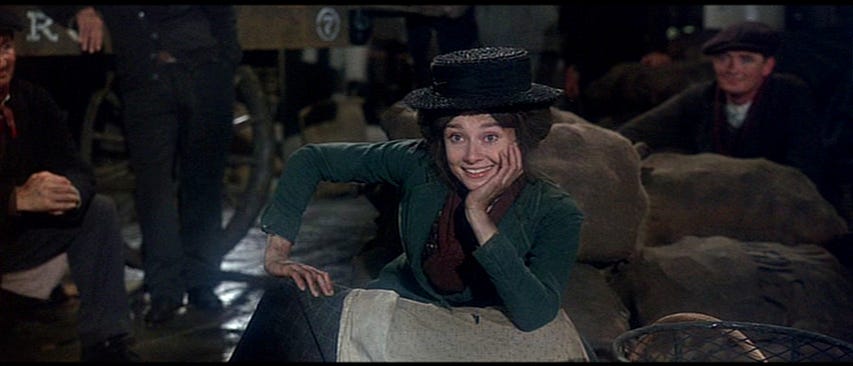"My Fair Lady" Turns 60
My Fair Lady is sixty years old and hasn’t aged a day. Beautiful anywhere, it especially shines on the big screen, where all the meticulous details can be seen down to the tiniest stitch.
If anyone hasn’t seen it, the film is an adaptation of the 1956 Alan Jay Lerner and Frederick Loewe stage musical, which was an adaptation of George Bernard Shaw’s Pygmalion (See some of the history here). It follows Eliza Doolittle, a Cockney flower girl and Henry Higgins, the rich linguistics guru who makes a bet with his friend, Colonel Pickering that he can turn Eliza into a lady.
One of the remarkable things about the stage musical is that it was the first lead role for one Julie Andrews, who was only twenty at the time. When Hollywood came calling, though, Andrews was too unknown to be considered for the film and was replaced by Audrey Hepburn. Rex Harrison and Stanley Holloway, who were both in the original cast, reprised their roles, capturing their performances forever.
Audrey was wonderful as well, but the songs were out of her range, so Marni Nixon sang for her. This might be an unpopular opinion, but I think this was a good move because everyone including Audrey would have been absolutely miserable if she had had to sing everything. Anyway, while we hear Marni’s voice it’s Audrey who sells the songs.
Warner Bros. pulled out all the stops with the production design and direction, with Cecil Beaton and George Cukor plying their talents respectively. One of the highlights for me was the Ascot Gardens scene, which was done in shades of white and yellow, looking as if the wrought iron fences and wooden overhangs were made out of paper. The music is graceful and refined, the movements choreographed, and there are so many shades and gradations of black and white and so many textures that the scene is almost unbroken in its purity, which is why Eliza shouting “Dover, move your bloomin’ arse!” at the horse she’s bet on stick out so much. Well, that and she’s pretty loud for a supposedly cultured, genteel lady.
Unusually, the score for My Fair Lady was kept largely intact for the Hollywood adaptation so as not to arouse the ire of the George Bernard Shaw Estate. Musical arranger Andre Previn simply had to play it safe, and the film has a lush, graceful feel.
My only minor beefs with this film is that it feels a wee bit long, as there’s quite a bit of time devoted to presentation and it’s done so deliberately, almost like a waltz, that the film seems to drag. The other thing is that Henry Higgins is kind of a major jerk who seems a bit slow to catch on, and on the big screen his energy is a little oppressive.
None of this, however, takes away from My Fair Lady’s place as an American classic. The audience I saw the film with were mostly in their sixties and seventies and came in joking about whether or not they would sing along. I don’t think they did, or if they did I didn’t hear them, but they did applaud at the end, which goes to show what a crowd-pleaser Lerner and Loewe’s show still is and how much the movie gets right.
My Fair Lady is currently playing on select screens, streaming on Paramount Plus and available on home media. Rated G.
My grade: A+
Principal Cast: Audrey Hepburn, Rex Harrison, Stanley Holloway, Wilfred Hyde-White, Gladys Cooper, Jeremy Brett, Theodore Bikel, Mona Washbourne, Isobel Elsom, John Holland
Directed by George Cukor.
Written by Alan Jay Lerner and George Bernard Shaw.




